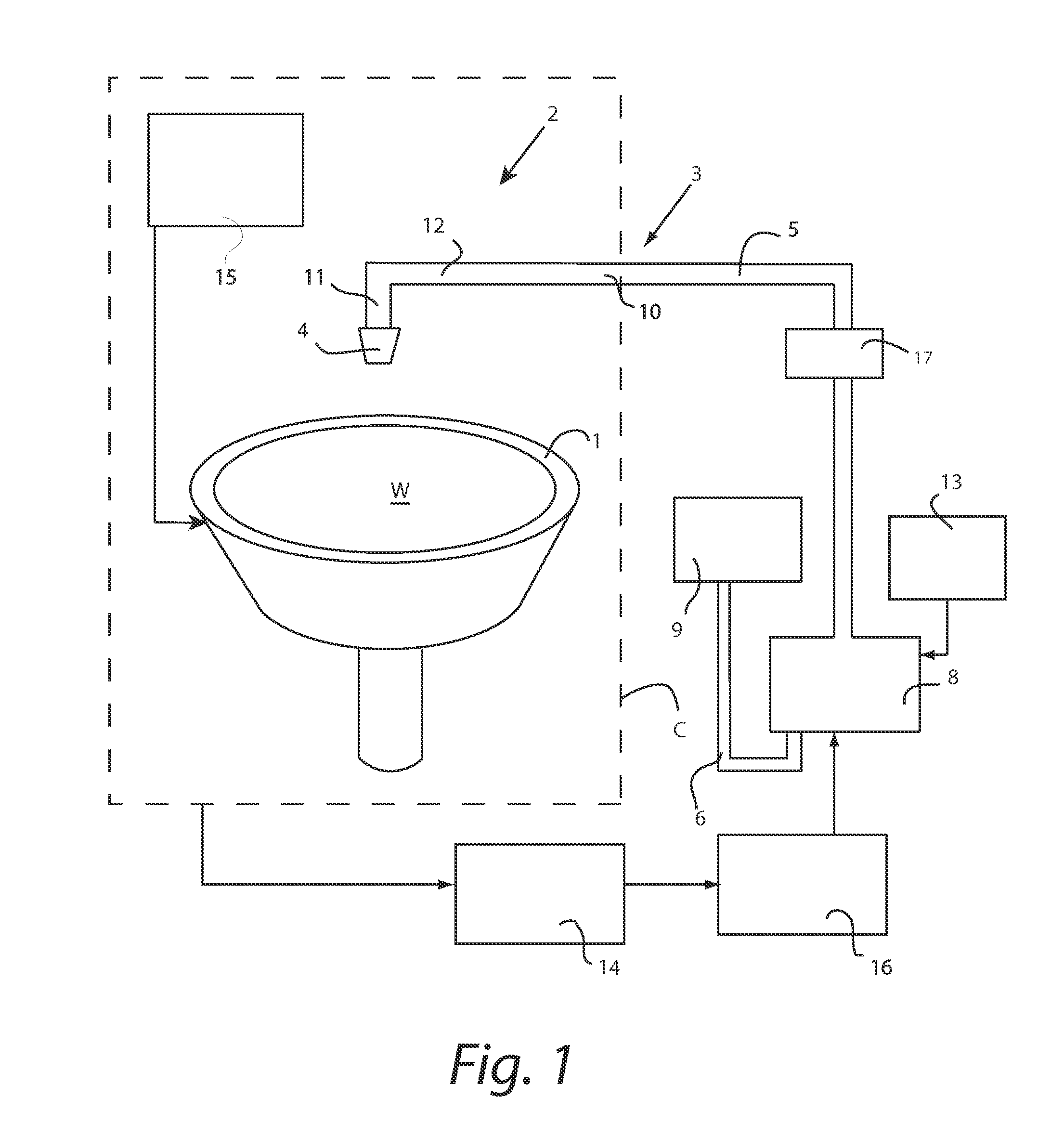Method and apparatus for surface treatment using inorganic acid and ozone
a technology of inorganic acid and surface treatment, applied in the direction of cleaning process and equipment, light and heating equipment, instruments, etc., can solve the problems of long process time, short half life, and significantly lower solubility of ozone in sulfuric acid
- Summary
- Abstract
- Description
- Claims
- Application Information
AI Technical Summary
Benefits of technology
Problems solved by technology
Method used
Image
Examples
Embodiment Construction
[0026]The term “ozone” as used herein refers not only to ozone in the form of gaseous O3, but also ozone combined with other gases required for generating ozone, such as oxygen, nitrogen or carbon dioxide; ozone as dissolved in a strong inorganic acid such as sulfuric acid; as well as the highly oxidative radicals formed by reaction of ozone with the inorganic acid.
[0027]In one embodiment of the method according to the present invention, sulfuric acid is chilled to below 20° C. for example in a tank, and is contacted with ozone gas so as to allow ozone to dissolve in the sulfuric acid. Pure sulfuric acid has a melting point of 10.36° C., whereas 98% sulfuric acid has a melting point of 3.0° C. the temperature to which the sulfuric acid or other inorganic acid is chilled will not be less than its melting point or that of the aqueous solution thereof being used.
[0028]However, the temperature at which the acid / ozone mixture is applied to the wafer can be generated can also be a lot hig...
PUM
 Login to View More
Login to View More Abstract
Description
Claims
Application Information
 Login to View More
Login to View More - R&D
- Intellectual Property
- Life Sciences
- Materials
- Tech Scout
- Unparalleled Data Quality
- Higher Quality Content
- 60% Fewer Hallucinations
Browse by: Latest US Patents, China's latest patents, Technical Efficacy Thesaurus, Application Domain, Technology Topic, Popular Technical Reports.
© 2025 PatSnap. All rights reserved.Legal|Privacy policy|Modern Slavery Act Transparency Statement|Sitemap|About US| Contact US: help@patsnap.com



